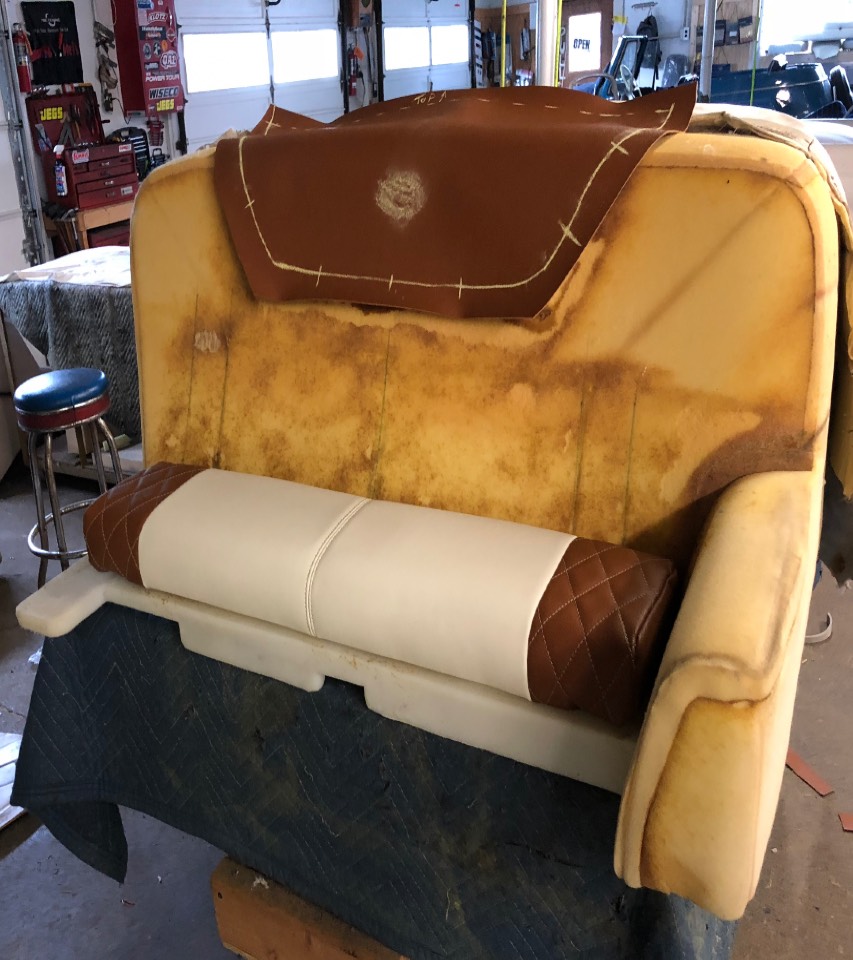The Ultimate Guide to Upholstery Fixing Methods
In the realm of furniture upkeep, the art of furniture repair service is an ability that can take a breath brand-new life right into worn-out pieces and protect cherished personal belongings. Keep tuned as we unwind the ins and outs of this craft and unveil the secrets to mastering upholstery repair service methods that will elevate your furniture repair undertakings.
Assessing Furniture Damages
When analyzing furniture damage, it is necessary to carry out a comprehensive assessment to accurately figure out the extent of the problems existing. This preliminary action is critical in establishing a thorough repair service plan that addresses all elements of the damages successfully. Begin by aesthetically checking the upholstery for any kind of visible tears, splits, discolorations, or discoloration. Take note of the place and dimension of each blemish as this information will direct the fixing process.
Next, evaluate the hidden structure of the upholstery to look for any kind of damages to the framework, springs, or cushioning. Often, the damage may not be instantly visible externally yet might dramatically affect the general integrity of the furniture. By extensively checking out both the outside upholstery and internal parts, you can make certain that all concerns are recognized and suitably dealt with during the fixing process.
Additionally, take into consideration the kind of upholstery product used as different textiles and leathers might need particular repair service strategies. upholstery repair. Understanding the material residential or commercial properties will assist in selecting one of the most suitable fixing techniques and items to attain optimal results
Essential Devices and Products
To successfully conduct furniture repair work, having the ideal tools and products is extremely important for accomplishing professional results. Essential tools for furniture repair work consist of a staple gun for safeguarding fabric, upholstery needles and string for stitching, scissors for cutting fabric, a rubber mallet for tapping in furnishings elements, and pliers for getting rid of old staples and nails. Additionally, having a textile marker for detailing patterns, a joint ripper for undoing seams, and a warm adhesive weapon for quick fixes can be valuable. Products such as furniture fabric, foam extra padding, batting, and webbing are essential for changing damaged elements. It is also essential to have a range of furniture adds, nails, and staples on hand for safeguarding fabric and trim. Adhesives like fabric glue or spray adhesive are beneficial for sure repair work. By guaranteeing you have the necessary tools and materials before starting an upholstery fixing project, you can work efficiently and efficiently to bring back furniture to its former magnificence.
Preparing the Furnishings Surface Area
Prep work of the furniture surface area is a critical first action in making sure the effective end result of any type of upholstery repair task. Prior to beginning any type of repair job, it is necessary to completely clean the furnishings surface to get rid of dust, dust, and any type of other particles that could conflict with the bond of brand-new materials. This can be done using a hoover, a soft brush, or a damp towel, depending upon the kind of furniture and the level of dirt existing.
As soon as the surface is tidy, any loosened or damaged upholstery textile, padding, or springtimes should be very carefully removed. This action is vital to guarantee that the brand-new materials stick safely which the repaired upholstery preserves a professional and smooth look. Furthermore, any old staples or tacks ought to be taken out, and the surface area needs to be great post to read evaluated for any structural damages that might need to be addressed before waging the fixing.

Repairing Splits and Openings
After guaranteeing the furnishings surface is totally free of dirt, dirt, and particles and getting rid of any damaged or loose upholstery materials, the next action in upholstery fixing entails attending to rips and openings in the material. Repairing tears and holes in furniture can aid prolong the life of your furniture and recover its visual charm. One common method for repairing small tears and holes is by utilizing a needle and thread to stitch the sides of the damaged area back with each other. For bigger holes or rips, a patch of fabric can be used find more to cover and enhance the broken section (upholstery repair). Textile adhesive or adhesive can likewise be utilized to secure the patch in place. It is essential to meticulously match the shade and structure of the patch textile to the initial upholstery for a seamless repair. As soon as the tear or hole is repaired, make sure that the area is properly cleansed and dried out before utilizing the furniture once more to prevent any type of further damages.
Removing Spots and Smells
Dealing with persistent stains and remaining smells in furniture calls for a targeted and complete strategy to guarantee efficient reconstruction of the fabric's appearance and freshness. Spots can be triggered by numerous substances such as food spills, animal mishaps, or drink accidents, while odors commonly originate from smoke, pet dander, or spills penetrating the upholstery fibers. To tackle stains, it is necessary to determine the kind of stain first to apply the appropriate cleaning service. For water-based spots, blotting with a mix of moderate detergent and water can be efficient, while oil-based discolorations may need a solvent-based cleaner. Smells, on the other hand, demand a much deeper cleansing process that includes reducing the effects of the source of the scent instead of concealing it. Utilizing sodium bicarbonate or specialized upholstery deodorizers can useful link help remove smells effectively. Sometimes, specialist cleansing services may be needed for serious discolorations and odors that persist despite natural home remedy. Normal maintenance and prompt attention to spills can assist in protecting against ingrained spots and odors, maintaining the furniture's condition.

Final Thought
Finally, grasping furniture repair methods calls for mindful analysis of damage, the usage of essential tools and materials, appropriate prep work of the furnishings surface, and the skilled fixing of rips, holes, stains, and odors. By following these actions, individuals can effectively restore and extend the life of their furniture.

Essential devices for furniture repair service include a staple gun for safeguarding material, upholstery needles and string for sewing, scissors for cutting fabric, a rubber club for tapping in furniture elements, and pliers for eliminating old staples and nails. By ensuring you have the necessary devices and materials before beginning an upholstery fixing task, you can function successfully and effectively to bring back furnishings to its previous splendor.
Preparation of the furnishings surface is a crucial first step in guaranteeing the successful result of any furniture repair service project.After ensuring the furnishings surface is complimentary of debris, dust, and dust and getting rid of any type of damaged or loosened upholstery materials, the following step in furniture repair work entails dealing with rips and holes in the material - upholstery repair. Fixing splits and holes in upholstery can aid extend the life of your furnishings and recover its aesthetic charm